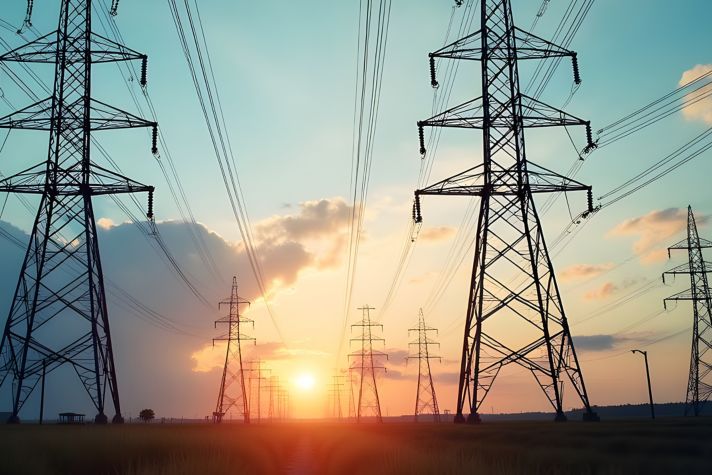-
Global
-
Africa
-
Asia Pacific
-
Europe
-
Latin America
-
Middle East
-
North America
- |
- BUSINESSES
- |
- Contact
- |
-
Global
-
Africa
-
Asia Pacific
-
Europe
-
Latin America
-
Middle East
-
North America
- |
- BUSINESSES
- |
- Contact
- |
You are browsing the product catalog for
You are viewing the overview and resources for
- News
- How Energy Storage Systems Will Help Us Live in the Future
How Energy Storage Systems Will Help Us Live in the Future
Storage enables cost savings and efficient use of renewable power, even after it’s been generated
As governments and companies pledge to go carbon neutral in the coming decades, we will need more solar and wind power — but we will also need to store that energy so it can be used when the sun isn’t shining and the wind isn’t blowing.
In the future, we’ll generate more of our electricity from zero-carbon solar energy sources and wind power, and we’ll store that electricity near the source, near the industries and communities that use it and everywhere in between. That clean energy will power our homes, businesses, cars and someday our aircraft — which means we’ll need more renewable production and storage capacity.
Why do we need energy storage?
Energy storage makes power from renewable sources dependable and available on demand. Wind turbines do not generate power when the weather is calm. Solar cells produce lots of zero-carbon electricity during the day when the sun is high, but unless those kilowatts are stored in a battery or other system, there is no way to use them when it’s dark.
In places such as California, where sunny days are plentiful and installed solar capacity is growing fast, net power usage peaks in the morning before the sun’s rays hit the panels. It then dips all afternoon as clean solar energy flows into the power grid and peaks again in the early evening as the sky darkens. Often called the duck curve, this pattern is getting more severe every year.
Many industrial and commercial businesses are installing battery energy storage systems (BESS) near their facilities to reduce their carbon footprints and provide backup emergency power sources.
A battery energy storage system also can help reduce electricity bills, by being charged when energy is cleaner and cheaper to generate and by drawing on stored supply during peak demand, when it’s dirtier and more expensive.
“The BESS function as operating reserves that constantly work to manage frequency fluctuations on the grid, charging up during off-peak times and discharging when energy demand and electricity costs increase,” said Ebru Arslan, Honeywell global senior business development manager for renewables and energy storage.
Some of the most energy-efficient and fully independent battery energy storage systems being built today are designed to fit inside shipping containers for commercial customers and utilities. The containers house safety and security systems as well as cooling and operating software, maximizing renewable energy investments.
Software can help customers decide when to charge their batteries and when to sell energy back to the grid. For example, with the Honeywell Virtual Power Plant application’s live weather and energy pricing data, industrial and commercial operations can reduce costs and guide efficient use of renewable power.
Additionally, if a generator fails or goes offline for any reason, the BESS platform can reduce the need to immediately bring additional, non-renewable power generations online. In this scenario, a remote facility can maintain operations as the platform runs in parallel with traditional generators.
How can energy storage systems make the grid more resilient?
In front of the meter, utilities use energy storage to relieve congestion not just on their generating plants but also on aging grid infrastructure. Renewable energy, electric vehicles and energy-efficient buildings place very complex demands on grids that were not built for so many resources. By using energy storage, utilities can balance grid loads and extend the lives of their infrastructures while they upgrade for a distributed energy future.
Another key point: Microgrids, whether for single facilities or whole communities shifting to renewable sources, also are employing energy storage to ensure reliable power. Honeywell’s Experion Energy Control System works with energy storage to keep power usage from overwhelming microgrids and to ensure that they never lose power.
How will longer-lasting batteries boost renewable energy?
To make battery energy storage systems even more efficient, Honeywell is pioneering a new flow battery technology that can store and discharge electricity even longer than commonly used lithium-ion batteries.
Flow battery technology uses a safe, nonflammable electrolyte to store and discharge electricity for up to 12 hours; lithium-ion batteries can only discharge for four hours. Designed with recyclable components, flow batteries do not degrade over time. They last longer than batteries that are widely used today, providing cost-efficient, reliable power for up to 20 years.
Battery energy storage systems are critical for our transition to a sustainable, renewable future. Learn more about what’s next in energy storage and the technology already in use today.
Copyright © 2026 Honeywell International Inc.




